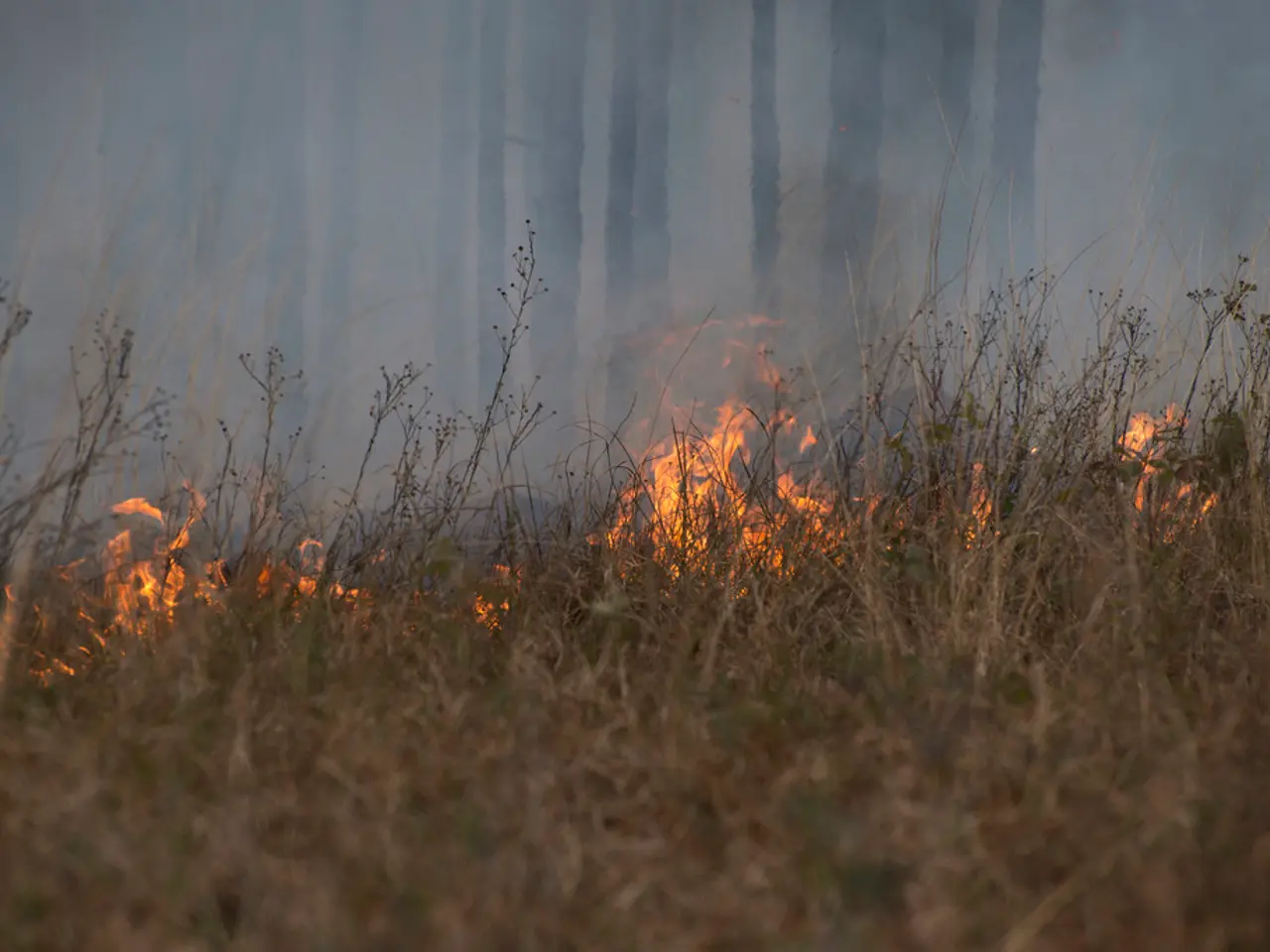Unconventional Wildfire Mitigation Strategy: Unleashing Herbivores Freely for Control
In a world where wildfires are becoming increasingly frequent and destructive, a new approach is gaining traction: rewilding. This concept, which involves reintroducing species to ecosystems where they once roamed or using proxies when said species are extinct, is being considered as a potential solution for wildfires in a hotter, more fiery world.
The idea of using herbivores to reduce wildfire risk is particularly intriguing. In California, where wildfires have been a persistent threat, this approach is catching on. Herbivores, such as the Tauros cows introduced by Rewilding Portugal, can help reduce the available fuel for fire, create natural fire breaks, and support ecosystems in developing into more mature, fire-resilient stages.
Rewilding Portugal, an organisation advocating for the reintroduction of native species, has successfully introduced the Tauros cows to the arid hills of northern Portugal. These cows have diets that may limit fuel for fires, and the barren trails shaped by their migrating herds serve as potential firebreaks.
Similarly, the presence of white rhinoceroses in the African savannah has been found to influence fire regimes by maintaining scattered grass communities. This, in turn, reduces the amount of dry vegetation that can fuel wildfires.
However, it's important to note that introducing species for rewilding can have unintended ecological consequences. A literature review found that such consequences are common when deliberately introducing species to ecosystems. These can include the extirpation of local species, spreading pests and parasites, and exacerbating human-wildlife conflict.
To mitigate these risks, a bipartisan group of senators from various states in the U.S. has introduced federal legislation promoting wildfire mitigation through grazing, focusing on domestic livestock like goats and cattle. Predators, such as wolves and lynx, are also promoted to stabilise their populations and act as top predators.
In Portugal, Rewilding Portugal advocates for the future reintroduction of European bison, ibex, and beavers to the region. The planned animal species for rewilding in Portugal's Great Côa Valley include the Iberian lynx, European bison, and Przewalski's horse.
The Sorraia horse, a hardy stock well-adapted to harsh conditions, is another species being introduced in Portugal. These horses form self-sufficient herds that have roamed the Iberian Peninsula for centuries.
In addition to wildfire prevention, rewilding is anticipated to bring other ecosystem benefits such as carbon sequestration, the formation of a mosaic of different habitats, and the attraction of pollinators and their predators.
In the Greater Côa Valley, historically averaging a large fire every six years, there hasn't been a fire since 2017. This is a promising sign that rewilding could indeed be a viable solution for wildfire prevention.
California Gov. Gavin Newsom announced additional funding for wildfire prevention, with a portion allocated for vegetation clearing. However, the focus on rewilding as a complementary approach is a significant shift in perspective, offering hope for a more fire-resilient future.
Read also:
- Understanding Hemorrhagic Gastroenteritis: Key Facts
- Stopping Osteoporosis Treatment: Timeline Considerations
- Tobacco industry's suggested changes on a legislative modification are disregarded by health journalists
- Expanded Community Health Involvement by CK Birla Hospitals, Jaipur, Maintained Through Consistent Outreach Programs Across Rajasthan








